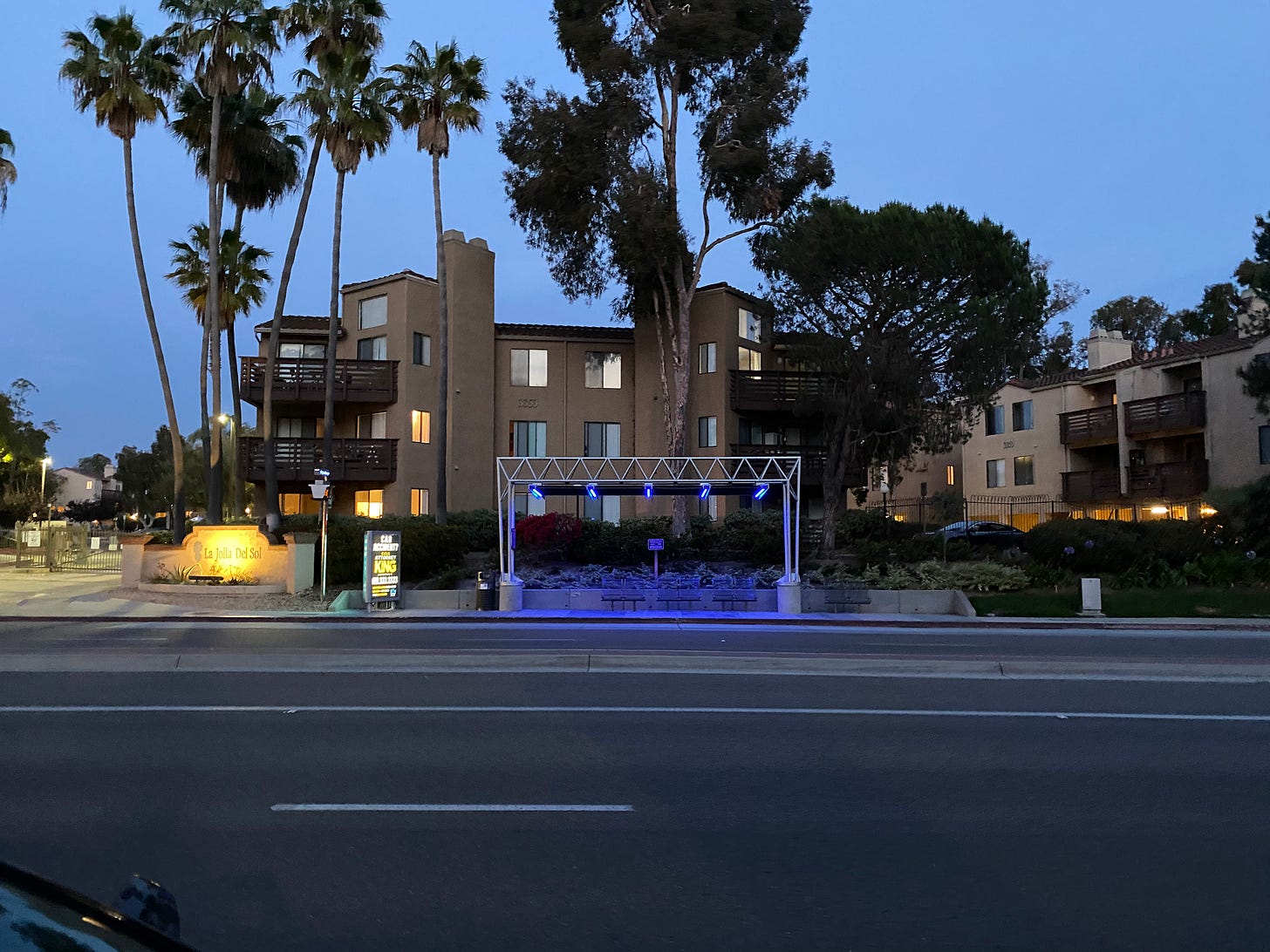An example of a well designed bus stop in University City, San Diego
A number of MTS (short for Metropolitan Transit System) bus lines serve the sleepy University City neighborhood in northern San Diego. Located within the Golden Triangle, a region known for its research institutes, clean-tech, and bio-tech businesses, University City is also home to UC San Diego, a large suburban campus with a student population larger than 31,000. While there’s a sizable on-campus community, many students live in the surrounding region and rely on the 201/202 SuperLoop lines to get to campus everyday. In fact, this line boasts the highest ridership in the system, with a whopping 2.2 million riders between 2019 - 2020. Given its importance, it’s little wonder that the SuperLoop’s bus lines have also seen the greatest amount of investment.
Like many things in life, bus stop design is unappreciated when done well and condemned when not. These stops (branded as SuperLoop Rapid stations) have 5 key design elements that are particularly well thought out.
Seating. Not only do the bus stops have ample bench seating, they’re also flanked by a cement wall that can provide additional seating if necessary. Furthermore, there are designated spots for wheelchair users both within and outside the covered shelter area.
Lighting. The bus stops are well lit in the evenings - not with harsh, white LED lighting, but warm, blue, energy-efficient lighting that provides a well-lit space for users without glaring through the windows of nearby apartments.
Shelter. While San Diego sees less than 12 inches of rainfall a year, it sees about 266 days of sunshine. These shelters provide protection not only from the infrequent precipitation, but also the sun’s hot (and harmful) UV rays.
Digital signage. Surfacing real-time transit information allows riders to plan accordingly and reduces perceived wait times. Digital signs can also be used to inform riders about emergency updates, commercial advertisements, and local events.
Trash bins. Proper distribution of trash receptacles has shown to decrease littering. A reduction in litter early on perpetuates a negative feedback loop whereby people are less likely to litter in a given area in the future.1
Figure 1. A SuperLoop Rapid Station on Lebon Drive
